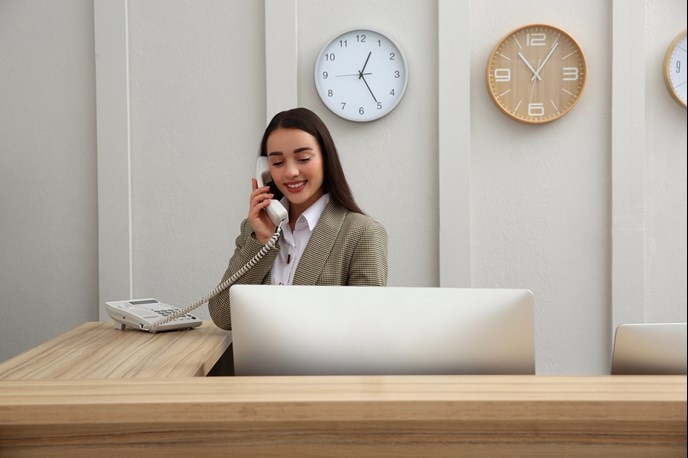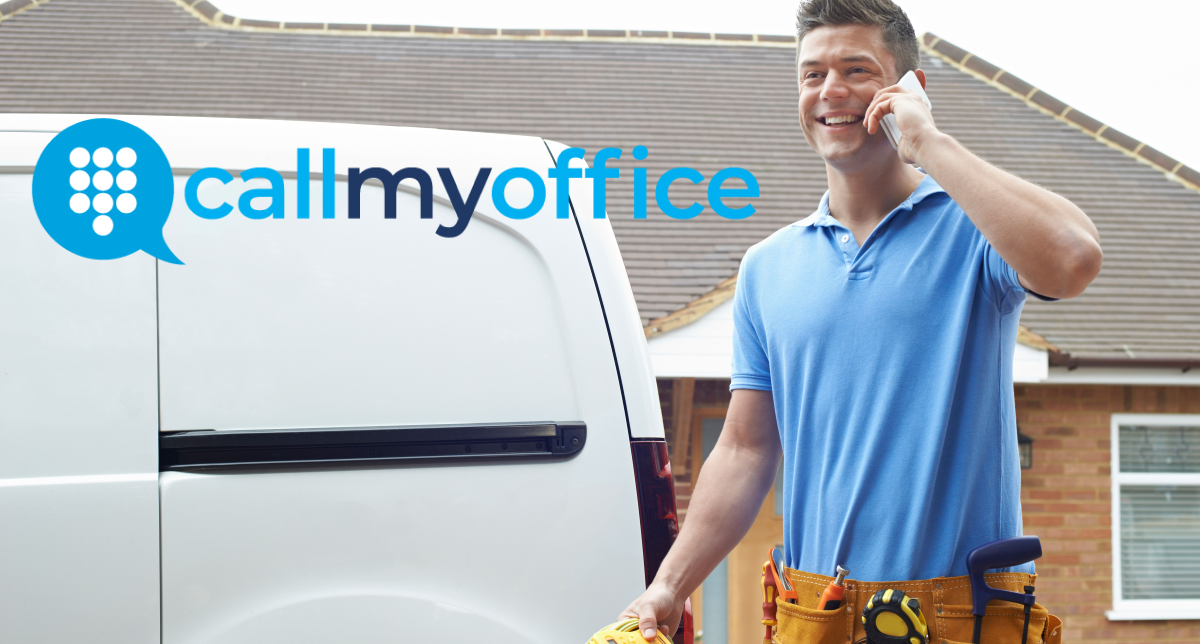All Categories
Featured
Table of Contents
- – What Is The Best Virtual Receptionist & Phone A...
- – Who Makes The Best Telstra Voice Features & Se...
- – What The Best What Is An Answering Services & ...
- – Who Has The Best Professional Call Answering ...
- – Who Makes The Best How Much Do Answering Serv...
- – What Is The Best A Complete Guide For Using ...
What Is The Best Virtual Receptionist & Phone Answering Services Australia Deal Right Now
This gadget and its successors were designed by Sava Jacobson, an electrical engineer with a personal consulting business. While early voice mail used magnetic tape technology, many contemporary equipment utilizes solid state memory storage; some gadgets use a mix of both, with a solid-state circuit for the outgoing message and a cassette for the inbound messages.
"toll saving" below) (virtual telephone answering service). This works if the owner is evaluating calls and does not want to consult with all callers. In any case after going, the calling celebration must be notified about the call having actually been addressed (for the most part this starts the charging), either by some remark of the operator, or by some welcoming message of the little, or dealt with to non-human callers (e.
This holds particularly for the Littles with digitally kept welcoming messages or for earlier devices (before the increase of microcassettes) with an unique unlimited loop tape, different from a second cassette, devoted to recording. There have been answer-only devices with no recording capabilities, where the welcoming message had to notify callers of a state of current unattainability, or e (phone call answering).
Who Makes The Best Telstra Voice Features & Services - Home Phone

about availability hours. In taping Little bits the welcoming generally contains an invitation to leave a message "after the beep". A voice mail that utilizes a microcassette to tape messages On a dual-cassette answerphone, there is an outgoing cassette, which after the specified number of rings plays a pre-recorded message to the caller.

Single-cassette answering machines consist of the outgoing message at the start of the tape and inbound messages on the staying space. They first play the statement, then fast-forward to the next available area for recording, then record the caller's message. If there are numerous previous messages, fast-forwarding through them can cause a considerable hold-up.
This beep is typically referred to in the welcoming message, asking for that the caller leave a message "after the beep". TADs with digital storage for the recorded messages do not reveal this hold-up, obviously. A little might provide a remote control facility, where the answerphone owner can sound the house number and, by entering a code on the remote telephone's keypad, can listen to recorded messages, or delete them, even when away from home.
What The Best What Is An Answering Services & How Does It Work? Brand To Buy

Thereby the machine increases the number of rings after which it responds to the call (generally by 2, resulting in four rings), if no unread messages are currently kept, however answers after the set variety of rings (normally 2) if there are unread messages. This enables the owner to discover out whether there are messages waiting; if there are none, the owner can hang up the phone on the, e.
Some devices likewise allow themselves to be from another location activated, if they have been changed off, by calling and letting the phone ring a certain a great deal of times (typically 10-15). Some service suppliers desert calls already after a smaller sized number of rings, making remote activation difficult. In the early days of Littles a special transmitter for DTMF tones (dual-tone multi-frequency signalling) was regionally required for push-button control, considering that the previously used pulse dialling is not apt to communicate proper signalling along an active connection, and the dual-tone multi-frequency signalling was executed step-by-step.
Any inbound call is not recognizable with respect to these homes in advance of going "off hook" by the terminal equipment. So after going off hook the calls need to be switched to proper devices and just the voice-type is immediately available to a human, however maybe, nevertheless need to be routed to a LITTLE (e.
Who Has The Best Professional Call Answering Services: Everything You ...?
What if I informed you that you do not have to actually choose up your device when addressing a consumer call? Somebody else will. So hassle-free, ideal? Responding to telephone call does not require someone to be on the other end of the line. Effective automated phone systems can do the technique simply as effectively as a live agent and sometimes even better.
An automated answering service or interactive voice action system is a phone system that interacts with callers without a live person on the line - business answering service. When business utilize this innovation, clients can get the response to a concern about your organization merely by using interactions set up on a pre-programmed call flow.
Although live operators upgrade the customer support experience, numerous calls do not need human interaction. A basic documented message or guidelines on how a consumer can recover a piece of information typically resolves a caller's instant requirement - professional phone answering service. Automated answering services are a simple and reliable way to direct inbound calls to the ideal individual.
Who Makes The Best How Much Do Answering Services Cost? Local Business Tips ...
Notice that when you call a company, either for assistance or item query, the first thing you will hear is a pre-recorded voice welcoming and a series of options like press 1 for client service, press 2 for queries, and so on. The pre-recorded alternatives branch out to other options depending upon the customer's selection.
The phone tree system assists direct callers to the best person or department utilizing the keypad on a mobile phone. In some instances, callers can use their voices. It's worth noting that auto-attendant choices aren't limited to the ten numbers on a phone's keypad. As soon as the caller has actually selected their very first option, you can design a multi-level auto-attendant that uses sub-menus to direct the caller to the ideal type of assistance.
The caller does not need to communicate with a person if the auto-attendant phone system can handle their issue. The automated service can route callers to a staff member if they reach a "dead end" and require support from a live agent. It is expensive to employ an operator or executive assistant.
What Is The Best A Complete Guide For Using Automated Answering Systems Holder For Car
Automated answering services, on the other hand, are substantially less pricey and supply considerable expense savings at an average of $200-$420/month. Even if you don't have actually devoted staff to deal with call routing and management, an automated answering service enhances efficiency by enabling your group to focus on their strengths so they can more effectively spend their time on the phone.
A sales lead routed to customer care is a lost shot. If a client who has product concerns reaches the incorrect department or receives insufficient responses from well-meaning staff members who are less trained to handle a particular type of concern, it can be a cause of disappointment and dissatisfaction. An automated answering system can lessen the number of misrouted calls, thereby helping your workers make much better use of their phone time while releasing up time in their calendar for other tasks.
With Automated Answering Systems, you can develop a customized experience for both your staff and your callers. Make a recording of your primary welcoming, and just update it routinely to reflect what is going on in your company. You can create as many departments or menu options as you want.
Table of Contents
- – What Is The Best Virtual Receptionist & Phone A...
- – Who Makes The Best Telstra Voice Features & Se...
- – What The Best What Is An Answering Services & ...
- – Who Has The Best Professional Call Answering ...
- – Who Makes The Best How Much Do Answering Serv...
- – What Is The Best A Complete Guide For Using ...
Latest Posts
Value Custom Phone Answering – Australia
Proven Bilingual Answering Service
Top Custom Phone Answering – Melbourne 3053
More
Latest Posts
Value Custom Phone Answering – Australia
Proven Bilingual Answering Service
Top Custom Phone Answering – Melbourne 3053